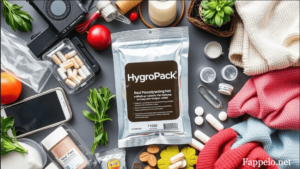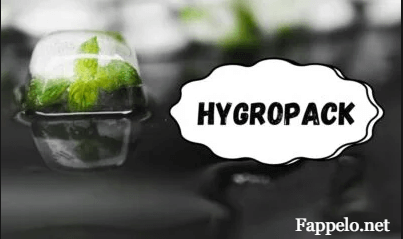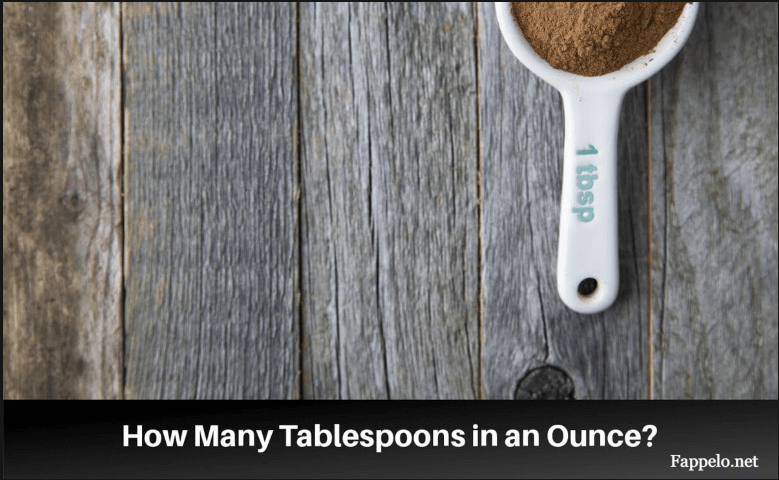Introduction
If you’ve come across the term Hygropack and are wondering what it means, how it’s used, and why it matters, you’re in the right place. This article will explain everything you need to know about Hygropack in simple, easy-to-understand words.
What is a Hygropack?

A Hygropack is a small, sealed packet that contains a substance designed to control moisture. These packs help maintain the right humidity level in a closed space. Whether it’s in a medicine bottle, food packaging, electronics, or clothing, a Hygropack is often used to keep products dry and protected from moisture damage.
Why is Moisture Control Important?
Moisture can cause a lot of problems, especially for certain products. Here’s why:
- Food spoilage: Moisture can make food go bad quickly.
- Mold and mildew: High humidity encourages mold growth.
- Rusting: Electronics and metal parts can rust or get damaged.
- Medicine damage: Some medicines lose their strength when exposed to moisture.
This is where a Hygropack plays a critical role. It helps absorb or release moisture to keep the environment balanced.
How Does a Hygropack Work?
A Hygropack works by using desiccants—substances that absorb or release moisture. The most common desiccants used in Hygropacks are:
- Silica gel
- Clay minerals
- Calcium chloride
These materials can pull moisture from the air and lock it inside the packet. In some cases, Hygropacks can also maintain a specific humidity level, which is especially useful in sensitive environments like electronics packaging or musical instrument storage.
Where are Hygropacks Used?
Hygropacks are used in many industries. Some of the most common ones include:
1. Pharmaceutical Industry
Medicines can degrade when exposed to air and moisture. Hygropacks are placed inside pill bottles or blister packs to keep drugs dry and effective for longer periods.
2. Food Packaging
In the food industry, especially with dry snacks, baked goods, or powdered foods, moisture control is crucial. A Hygropack helps keep the contents fresh.
3. Electronics
Humidity can damage electronic parts. Whether it’s a phone, camera, or computer part, a Hygropack inside the packaging prevents rust or short circuits.
4. Clothing and Textiles
Mold and mildew can ruin clothes, especially during shipping or storage. Hygropacks are placed in packaging to keep fabrics safe.
5. Leather Goods
Leather is sensitive to moisture. Bags, shoes, and accessories often come with Hygropacks to prevent mold.
6. Musical Instruments
Instruments like guitars or violins need to be stored at specific humidity levels. Hygropacks help maintain this balance.
Types of Hygropacks
There are different types of Hygropacks based on their moisture control abilities:
1. Desiccant Packs
These are designed to absorb moisture from the air. They’re ideal for dry environments where moisture needs to be reduced.
2. Humidifying Packs
These packs release moisture when the air gets too dry. They’re perfect for keeping wooden items or tobacco products from drying out.
3. Two-Way Humidity Control Packs
These smart packs can both absorb and release moisture to keep the environment at a fixed humidity level. They’re used in premium electronics, cigars, and musical instruments.
Benefits of Using Hygropacks
Using Hygropacks offers many advantages:
- Protects product quality
- Extends shelf life
- Prevents moisture damage
- Cost-effective
- Non-toxic and safe for most applications
Are Hygropacks Reusable?
Some Hygropacks, especially those with silica gel, are reusable. You can “recharge” them by heating them in an oven to remove the absorbed moisture. However, not all types are reusable. Always check the product label.
Are Hygropacks Safe?
Most Hygropacks are non-toxic, especially those meant for use with food and medicine. However, they are not edible. Always keep them out of reach of children and pets.
How to Choose the Right Hygropack
Here are some tips to choose the right Hygropack for your needs:
- Know your environment – Is it dry or humid?
- Know your product – Are you protecting food, electronics, or medicine?
- Pick the right size – Larger spaces need larger or multiple Hygropacks.
- Check for food-grade certification – If you’re using it for edible items.
- Go for two-way packs – If you need to maintain a steady humidity level.
How to Use a Hygropack
Using a Hygropack is simple:
- Place it inside the container, box, or packaging.
- Make sure the pack is not opened or damaged.
- Seal the container well to prevent outside air from entering.
Storing Hygropacks
If you’re not using the Hygropacks immediately, store them in an airtight bag or container. This will keep them fresh and ready for use when needed.
Alternatives to Hygropacks
If you can’t find a Hygropack, you can try some home alternatives:
- Rice grains (absorb moisture, often used with wet phones)
- Baking soda
- Charcoal
However, these are not as effective or safe as professionally made Hygropacks.
Where to Buy Hygropacks
You can buy Hygropacks from:
- Online stores like Amazon, eBay, Alibaba
- Pharmacy supply companies
- Electronics stores
- Industrial suppliers
Always read reviews and check if the product meets your needs.
FAQs
Q1. Can I use Hygropacks in my car?
Yes! They can prevent foggy windows and reduce musty smells.
Q2. How long do Hygropacks last?
It depends on the humidity level and the size of the pack. They usually last a few weeks to several months.
Q3. Do I need to remove the Hygropack after use?
Yes, if it’s saturated or expired. Otherwise, it may not work properly.
Q4. Can I use more than one Hygropack?
Absolutely. Using multiple packs ensures better moisture control, especially in larger containers.
Conclusion
A Hygropack is a simple yet powerful tool that protects your valuable items from moisture damage. Whether it’s food, medicine, electronics, or clothing—keeping them dry means keeping them safe.
So next time you see a little packet labeled “Do Not Eat,” remember—it’s working behind the scenes to protect what matters.
If you’re storing or shipping sensitive items, Hygropacks are definitely worth considering.



